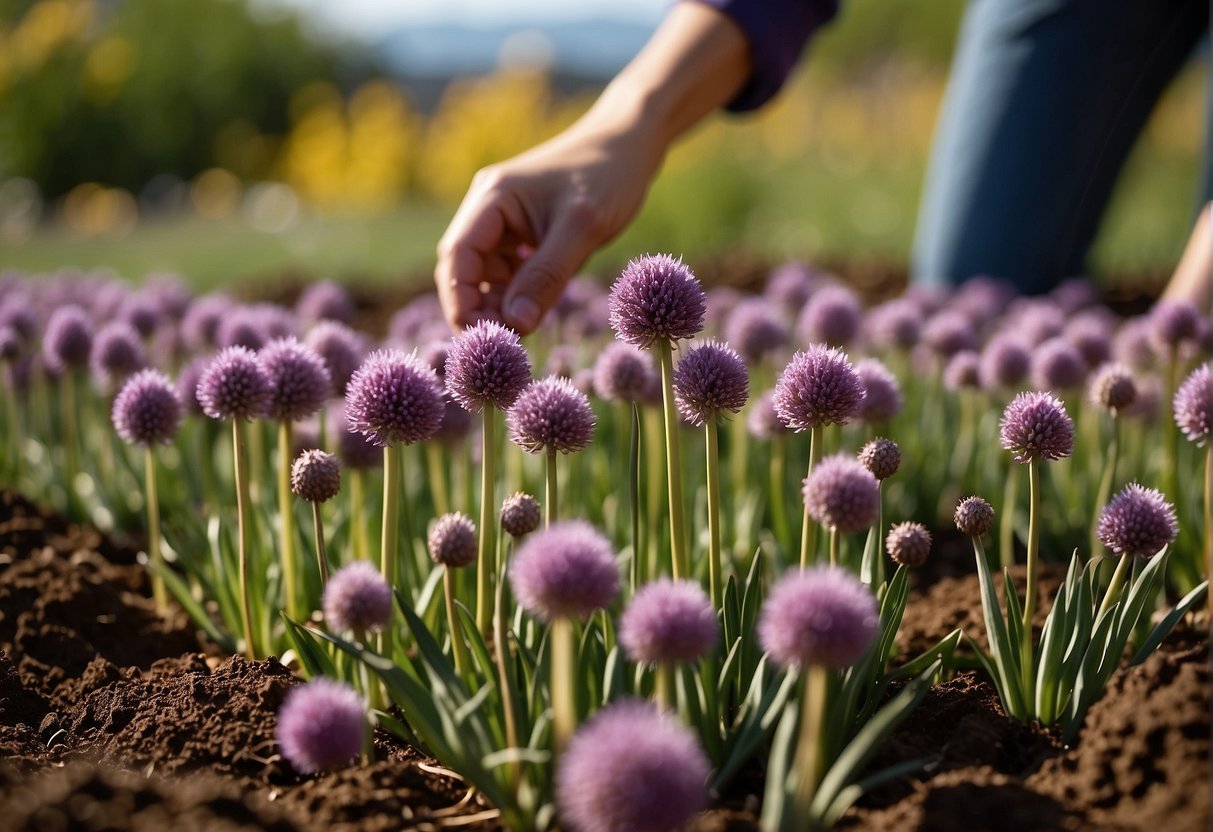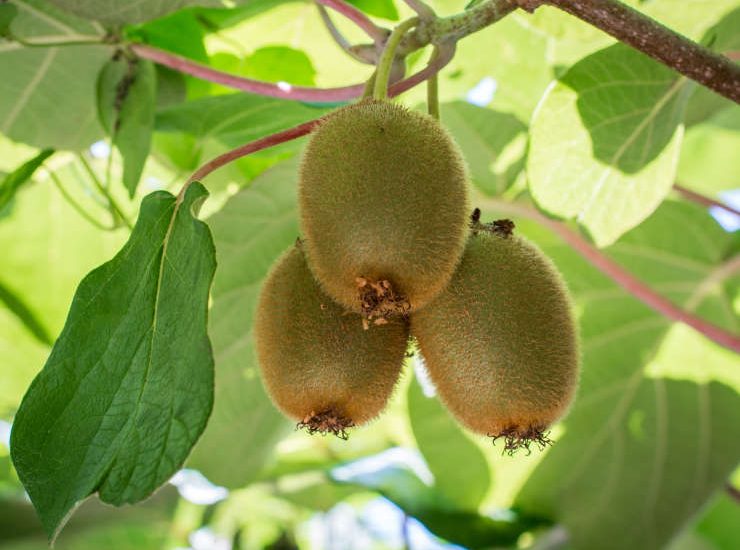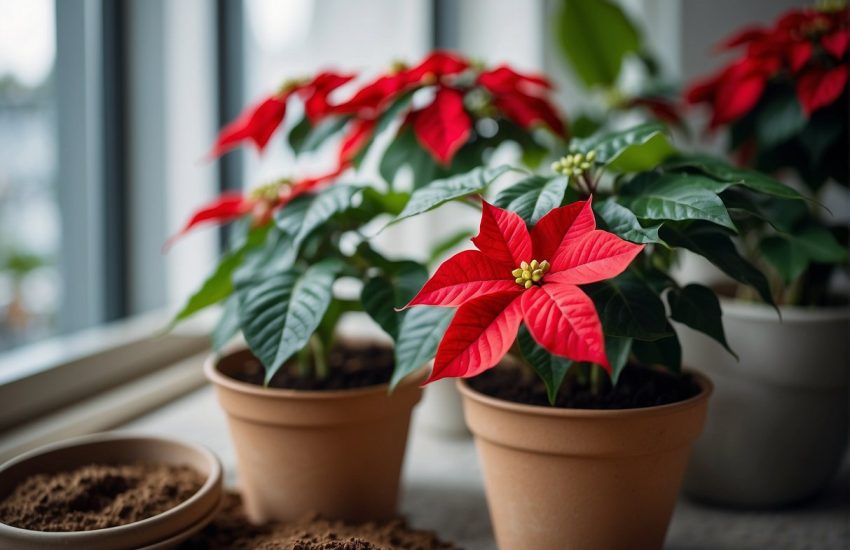When to Plant Allium Bulbs: A Guide for Gardeners
Allium bulbs are a popular addition to many gardens due to their unique shape and beautiful blooms. These bulbs are easy to plant and care for, making them a great option for both beginner and experienced gardeners. However, the timing of when to plant allium bulbs can be a bit tricky, as it can vary based on a few different factors.

One of the most important things to consider when planting allium bulbs is the climate in your area. Allium bulbs prefer to be planted in the fall, before the first frost hits. This allows the bulbs to establish their roots before winter sets in. However, if you live in a warmer climate, you may be able to plant allium bulbs later in the year, as long as you do so before the ground freezes. It’s always best to consult a gardening guide or local expert to determine the best time to plant allium bulbs in your specific area.
Another factor to consider when planting allium bulbs is the type of soil in your garden. Allium bulbs prefer well-draining soil that is rich in organic matter. If your soil is heavy or clay-like, you may need to amend it with compost or other organic matter to improve drainage. It’s also important to choose a planting location that receives full sun, as allium bulbs require plenty of light to grow and bloom. With these factors in mind, you can ensure that your allium bulbs will thrive and add a beautiful touch to your garden.
Choosing the Right Time to Plant Allium Bulbs
When it comes to planting allium bulbs, timing is crucial. The right planting time will ensure that your bulbs have enough time to establish themselves before winter sets in, and will result in a beautiful display of flowers come spring. In this section, we will discuss the ideal seasons for planting allium bulbs and the climate considerations you should take into account.
Understanding the Ideal Seasons
Allium bulbs should be planted in the fall or early summer for best results. Planting in the fall allows the bulbs to establish themselves before the ground freezes, while planting in early summer gives them plenty of time to grow and develop before winter. Late spring planting can also be successful, but it may result in a delayed bloom time.
Climate Considerations for Bulb Planting
When deciding on the best time to plant allium bulbs, it’s important to consider your local climate and USDA hardiness zone. In general, allium bulbs should be planted before the first frost of the season. If you live in a colder climate, it’s best to plant bulbs in the early fall to ensure they have enough time to establish themselves before winter. If you live in a warmer climate, you may be able to plant bulbs later in the fall or even in early winter.
It’s also important to consider the amount of rainfall your area receives. Allium bulbs need well-draining soil to thrive, so if you live in an area with heavy rainfall, you may need to plant your bulbs in raised beds or amend your soil with sand or gravel to improve drainage.
In summary, the ideal time to plant allium bulbs is in the fall or early summer, before the first frost of the season. Consider your local climate and rainfall patterns when deciding on the best planting time, and be sure to provide well-draining soil for your bulbs to thrive.
Selecting and Preparing the Planting Site

When it comes to planting allium bulbs, selecting and preparing the right planting site is crucial for the success of the plant. Here are some key factors to consider when choosing a location for your allium bulbs.
Soil Requirements for Alliums
Alliums require well-drained soil to thrive. They do not do well in soil that is too wet or heavy. If your soil is heavy or clay-like, it is recommended to amend it with compost or sand to improve drainage. Alliums prefer a soil pH range of 6.0 to 7.0. A soil test can help determine if your soil is within this range and if any amendments are needed.
Sunlight and Spacing Needs
Alliums require full sun to grow and flower properly. They should be planted in a sunny spot that receives at least 6 hours of direct sunlight per day. Alliums also need adequate spacing to grow and develop properly. The bulbs should be planted 4-6 inches apart and 4-6 inches deep. If planting in rows, space the rows 12-18 inches apart.
When selecting a location for your allium bulbs, it is important to consider these factors to ensure the best possible growing conditions. With proper soil preparation and adequate sunlight and spacing, your alliums are sure to thrive and produce beautiful blooms.
Planting Techniques for Allium Bulbs
When it comes to planting allium bulbs, there are a few key techniques that can help ensure success. By following proper depth and orientation guidelines and caring for the bulbs post-planting, gardeners can enjoy beautiful blooms year after year.
Proper Depth and Orientation
One of the most important factors to consider when planting allium bulbs is the depth at which they are planted. Allium bulbs should be planted at a depth of approximately three times their diameter. This means that larger bulbs should be planted deeper than smaller bulbs.
It is also important to pay attention to the orientation of the bulb when planting. Allium bulbs should be planted with the pointed end facing up and the flat end facing down. This will help ensure that the bulb can properly sprout and grow.
Caring for Alliums Post-Planting
Once allium bulbs have been planted, it is important to care for them properly in order to promote healthy growth and blooming. One important step is to water the bulbs thoroughly after planting. This will help ensure that the soil is moist and that the bulbs can properly establish themselves.
Mulching can also be a helpful step in caring for allium bulbs post-planting. A layer of mulch can help retain moisture in the soil and regulate soil temperature. Additionally, adding compost to the soil can help provide the bulbs with necessary nutrients for healthy growth.
By following these planting techniques and caring for allium bulbs post-planting, gardeners can enjoy beautiful blooms for years to come.
Maintaining Healthy Allium Plants

Allium plants are easy to grow and maintain, and with proper care, they can produce beautiful blooms year after year. Here are some tips to keep your allium plants healthy and thriving.
Managing Pests and Diseases
Allium plants are generally resistant to pests and diseases, but they can still be affected by some common garden problems. The most common pests that can attack allium plants are onion maggots and thrips. To prevent these pests from damaging your plants, you can use insecticidal soap or neem oil. It is important to follow the instructions on the product label carefully.
Allium plants can also be affected by fungal diseases such as downy mildew and rust. To prevent these diseases, make sure to plant your allium bulbs in well-draining soil and avoid over-watering. If you notice any signs of fungal disease on your plants, remove the affected leaves and dispose of them in the trash to prevent the disease from spreading.
Seasonal Care and Propagation
Allium plants require little maintenance once they are established, but there are a few things you can do to ensure they thrive. In the spring, when your allium plants start to grow, apply a balanced fertilizer to promote healthy growth. You can also support your allium plants by staking them if they become too tall and start to lean.
Allium plants can be propagated by dividing the bulbs in the fall or early spring. To do this, carefully dig up the bulbs and separate them into smaller sections, making sure each section has roots and a few shoots. Replant the sections in well-draining soil and water thoroughly.
Pruning is generally not necessary for allium plants, but you can remove the spent flowers after they have bloomed to improve the appearance of the plant and prevent seed production.
By following these tips, you can maintain healthy allium plants that will provide beautiful blooms year after year.
Frequently Asked Questions

What month is best for planting allium bulbs for optimal growth?
Allium bulbs are best planted in the fall, ideally between September and November. This timing allows the bulbs to establish roots before winter and provides them with the necessary chilling period required for optimal growth.
How far apart should allium bulbs be spaced in the garden?
Allium bulbs should be spaced around 6 inches apart in the garden. This spacing allows for sufficient air circulation and prevents overcrowding, which can lead to disease and poor growth.
Can you expect alliums to bloom annually without replanting?
Alliums are perennial bulbs and can bloom annually without the need for replanting. However, it is important to provide them with the necessary growing conditions, including well-draining soil, adequate sunlight, and proper watering.
What is the typical blooming period for alliums once planted?
Alliums typically bloom in late spring or early summer, around May or June. The exact blooming period can vary depending on the specific variety of allium and growing conditions.
How quickly can you expect allium bulbs to multiply in your garden?
Allium bulbs can multiply fairly quickly in the garden, with some varieties producing offsets or bulblets that can be replanted to create new plants. However, the rate of multiplication can vary depending on the specific variety and growing conditions.
How many allium bulbs are recommended to plant together for a full display?
The number of allium bulbs recommended for a full display can vary depending on the size of the bulbs and the desired effect. As a general rule, planting around 10-15 bulbs together can create a full and impressive display.


